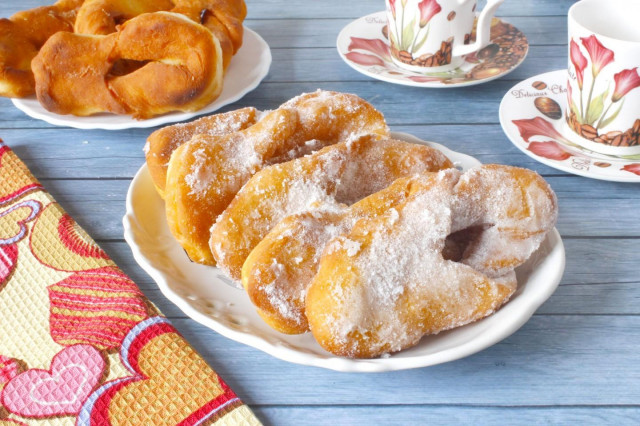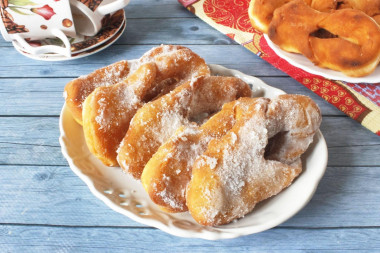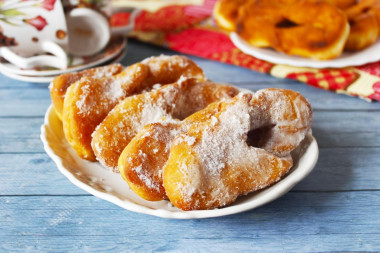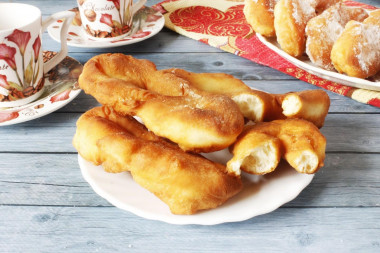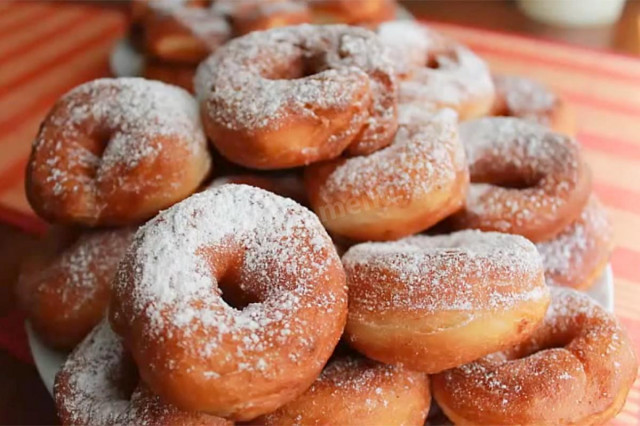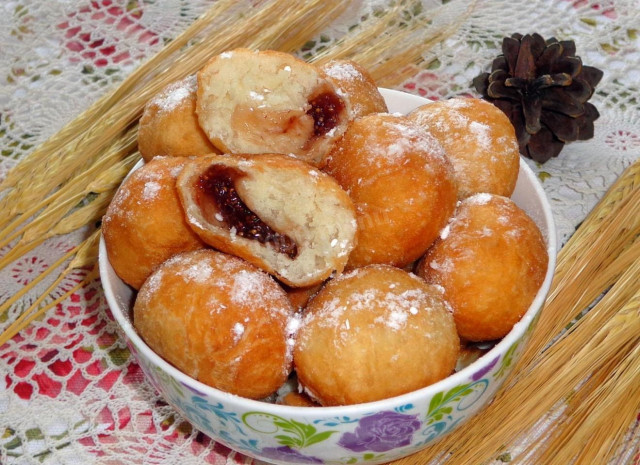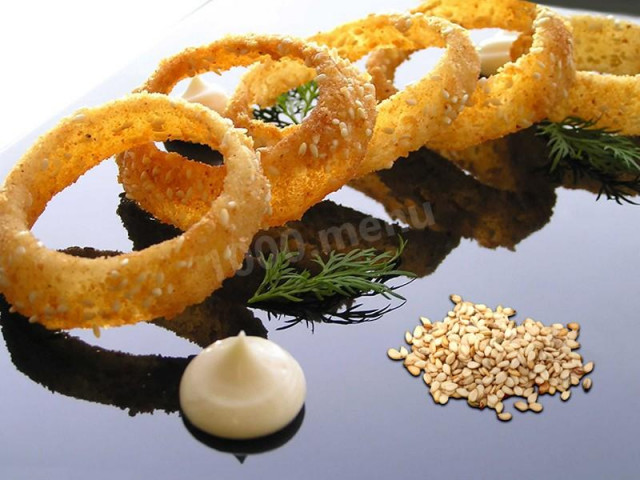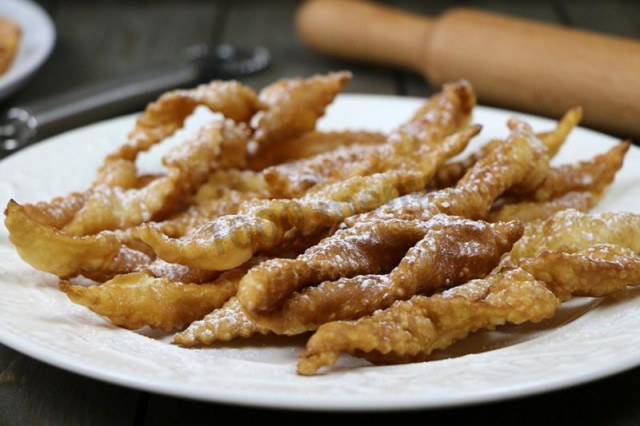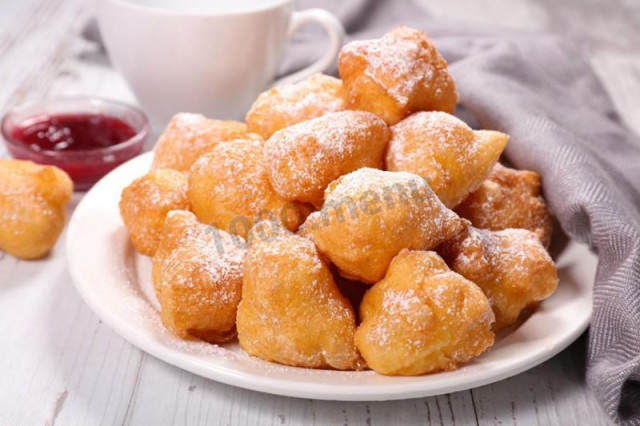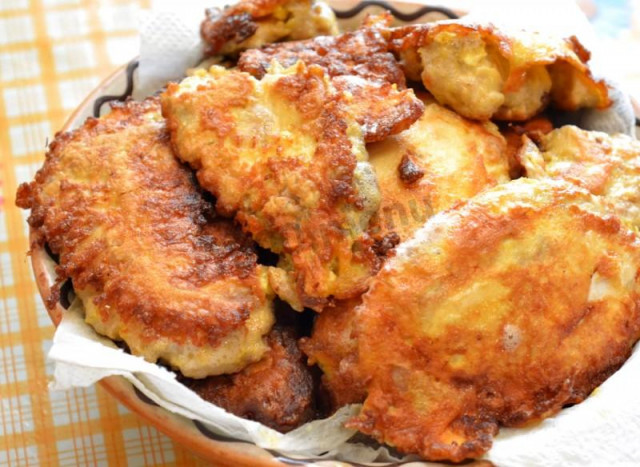Composition / ingredients
Step-by-step cooking
Step 1:
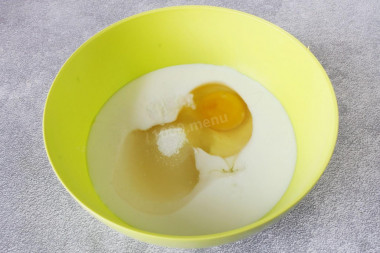
Prepare the dough. Kefir and eggs should be at room temperature so that the dough turns out what it needs. Pour kefir into a bowl, beat in an egg, pour in vegetable oil, add sugar, salt and soda. Yes! and take a deep and wide bowl for that.
Step 2:
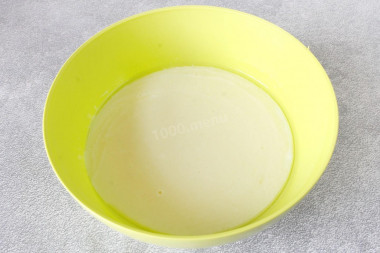
Mix everything thoroughly until a homogeneous mass is formed. We make sure that there are no lumps. How to mix the dough? You can use a tablespoon, fork, whisk.
Step 3:
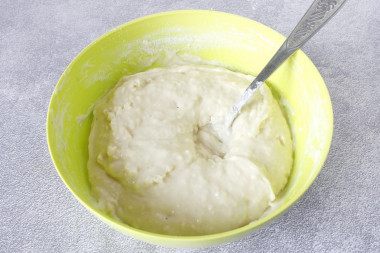
Pre-sift the flour to saturate it with oxygen and make it more lush. Pour most of the flour into a bowl and mix. It is better to add flour in parts and mix it evenly. Keep in mind that flour may take more or less than mine. It depends on the properties of the flour itself.
Step 4:
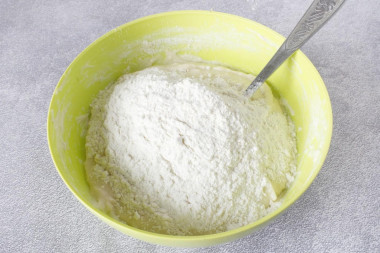
Pour in the rest of the flour, also in parts. Mix the dough with a spoon (at this stage it allows it) and collect it into a lump.
Step 5:
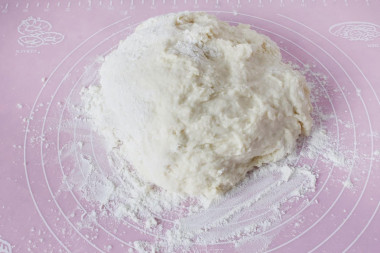
What consistency should the tests for nuts have? The dough turns out to be quite sticky and we need to be prepared for the fact that we will have to work with sticky dough all the time. We will help ourselves with flour, which will go to the bottom. It took me about 70-100 grams, you may take a little more or less, depending on the grade and quality of flour. Spread the dough on the table, sprinkled with flour.
Step 6:
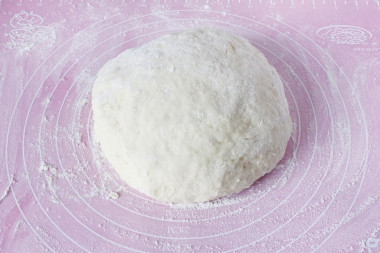
Roll the dough into a ball and lightly sprinkle with flour not only the ball itself, but also the place under it. Cover with cling film and leave for 15 minutes to rest.
Step 7:
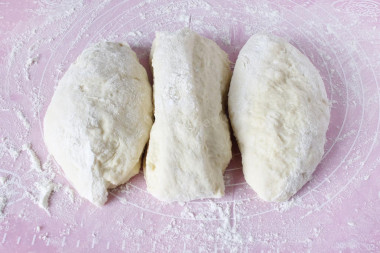
Next, divide the dough into several equal parts. I am divided into 3 parts.
Step 8:
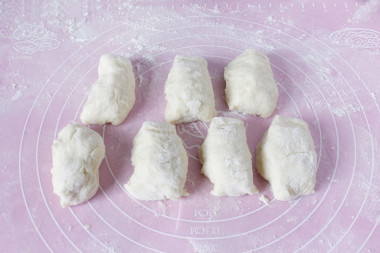
We cut small pieces from each part - I did it about 2 centimeters wide and weighing an average of 35 grams. In total, I got 25 pieces. We roll them in flour.
Step 9:
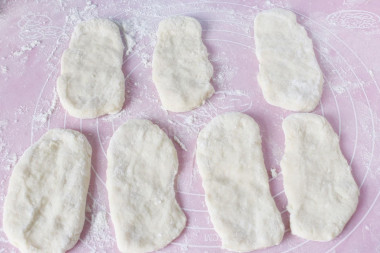
We stretch the oval with our hands - the nuts will rise well, so I made the blanks thinner (about 0.2-0.3 centimeters thick). If you want more lush nuts, then make the ovals thicker. All ovals should be approximately the same size and shape.
Step 10:
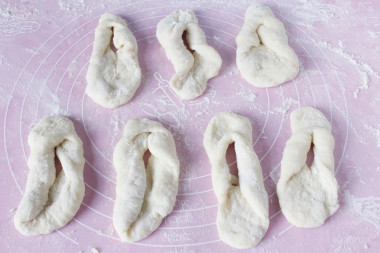
In the center of each oval we make a small (about 1 centimeter) incision with a knife. We form the nuts like this: we take one edge of the workpiece and stretch it through the incision, as if turning it out.
Step 11:
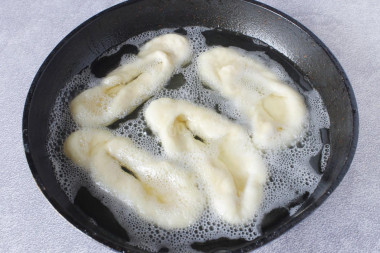
We pour vegetable oil into a small frying pan or a round baking dish with a small diameter (so that there is less oil consumption) - it should reach half of the nuts when they rise. I used a frying pan with a bottom diameter of 20 cm and poured 200 ml of oil at once. We warm up the oil well. We lay out the blanks. Fry on one side. I fried for about 3-4 minutes on a medium burner on medium heat - my stove is a regular gas stove.
Step 12:
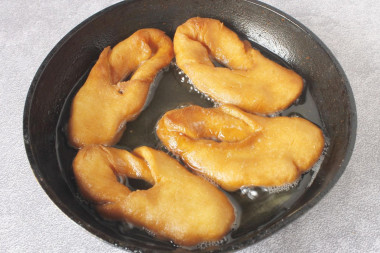
Turn the nuts over and fry until cooked. It took me about 2-3 more minutes. You can roast them harder or make them lighter - as you like. We take out the finished nuts and fry the next batch. I poured 50 ml of oil twice as it boiled and also warmed it up. Make sure that no liquid gets into the oil, so that it does not start shooting.
Step 13:
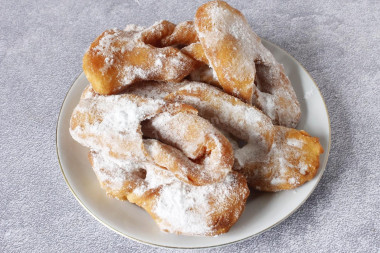
Sprinkle the pastries with powdered sugar and serve with tea. Enjoy your meal!
The whole secret of successful nuts is not to score the dough with flour, which is why we take the flour to the bottom, and do not pour it all into the dough. And here's another point: I recommend checking the heating of the oil with a wooden stick - dip it in the oil and look if small bubbles form around it, then the oil has warmed up enough. Powdered sugar can be made by grinding sugar in a coffee grinder.
Don't ask me why this pastry is called nuts , despite the fact that it does not look like them at all. Who first gave her this name is unknown, but it stuck. Perhaps because of the crispness. In another way, the dish is called brushwood, verguns.
--------------------
Articles to help:
How to cook delicious in the oven according to someone else's recipes
Wheat flour. Secrets and nuances of use
Caloric content of the products possible in the composition of the dish
- Chicken egg - 157 kcal/100g
- Egg white - 45 kcal/100g
- Egg powder - 542 kcal/100g
- Egg yolk - 352 kcal/100g
- Ostrich egg - 118 kcal/100g
- Whole durum wheat flour fortified - 333 kcal/100g
- Whole durum wheat flour, universal - 364 kcal/100g
- Flour krupchatka - 348 kcal/100g
- Flour - 325 kcal/100g
- Granulated sugar - 398 kcal/100g
- Sugar - 398 kcal/100g
- Kefir fat - 62 kcal/100g
- Kefir of 1% fat content - 38 kcal/100g
- Low-fat kefir - 30 kcal/100g
- Kefir "doctor beefy" 1,8% fat content - 45 kcal/100g
- Kefir 2.5% fat content - 53 kcal/100g
- Vegetable oil - 873 kcal/100g
- Salt - 0 kcal/100g
- Powdered sugar - 374 kcal/100g
- Baking soda - 0 kcal/100g

